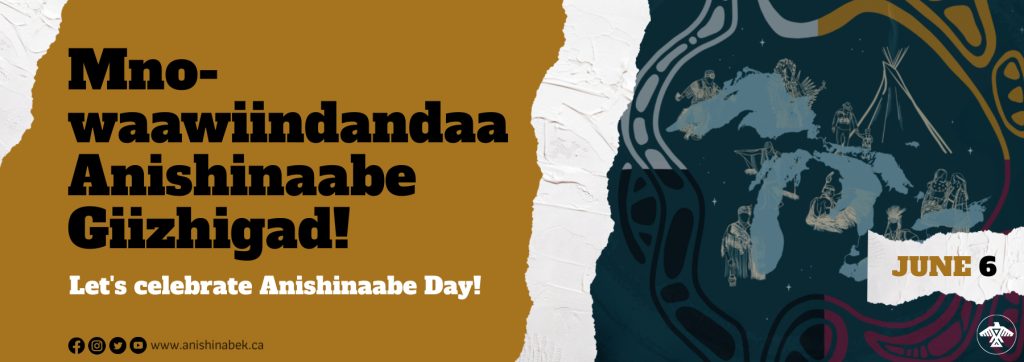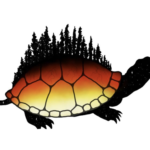Anishinaabe Giizhigad: June 6
Lessons/Activities for Teachers
Background Information for Teachers:
Refer to the following document for background information on why we celebrate Anishinaabe Giizhigad (Anishinaabe Day) on June 6:
The importance of Anishinaabe Giizhigad:
- The Anishinabek Nation Grand Council confirmed the Anishinaabe Chi-Naaknigewin on June 6, 2012, in Sheguiandah First Nation by The Pipe Ceremony. This is Anishinaabe Law.
- June 6th commemorates the proclamation of the Anishinaabe Chi-Naaknigewin and the adoption of the Ngo Dwe Waangizid Anishinaabe, a commitment to live as Anishinabek.
- The Elders gave us the Preamble to the Anishinaabe Chi-Naaknigewin: Ngo Dwe Waangizid Anishinaabe, which means One Anishinaabe Family. That is Anishinaabe Law.
- The entire Anishinaabe worldview is captured in Ngo Dwe Waangizid Anishinaabe, the Preamble to the Anishinaabe Chi-Naaknigewin.
- In the Anishinaabe Chi-Naaknigewin, it is stated that Anishinaabemowin is our first language. It says that we will govern as Anishinaabe, according to Anishinaabe Laws gifted by the Creator.
- The day celebrates and honours Anishinaabe identity, history, traditions, people, and pride.
Source: Anishinabek Nation document



